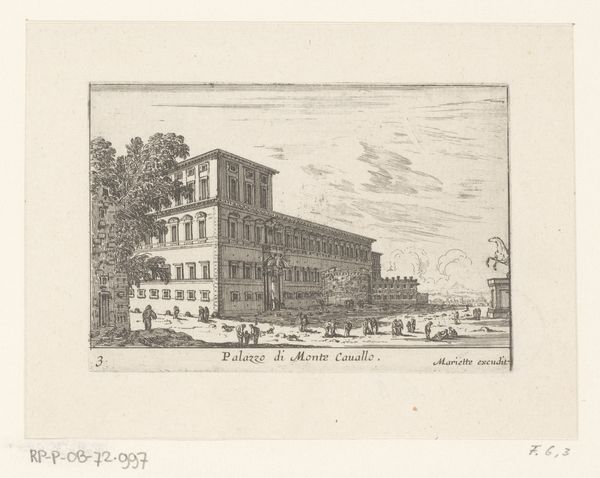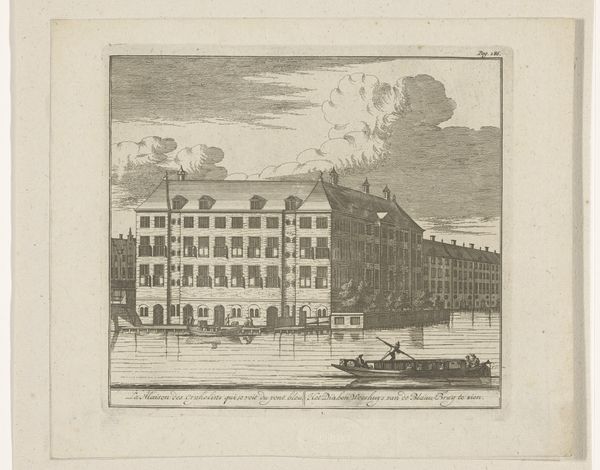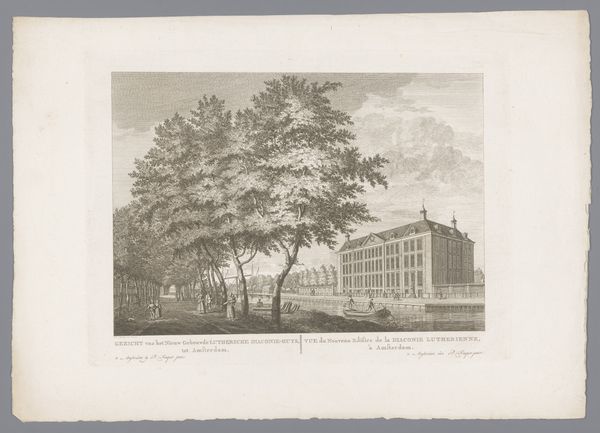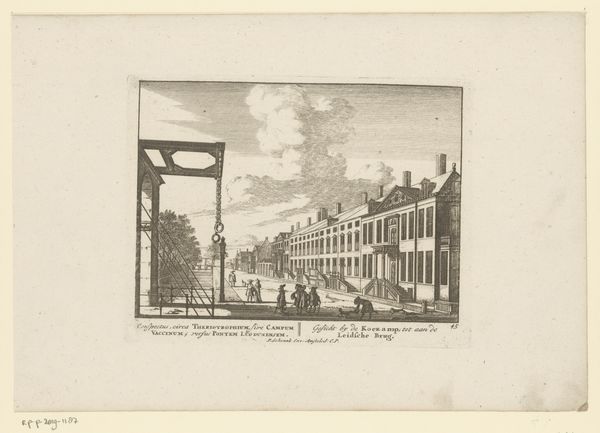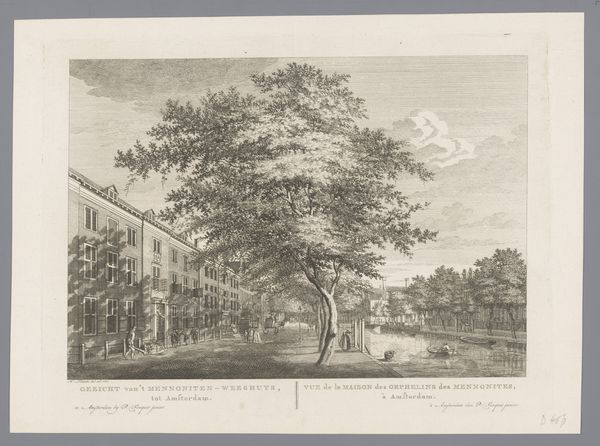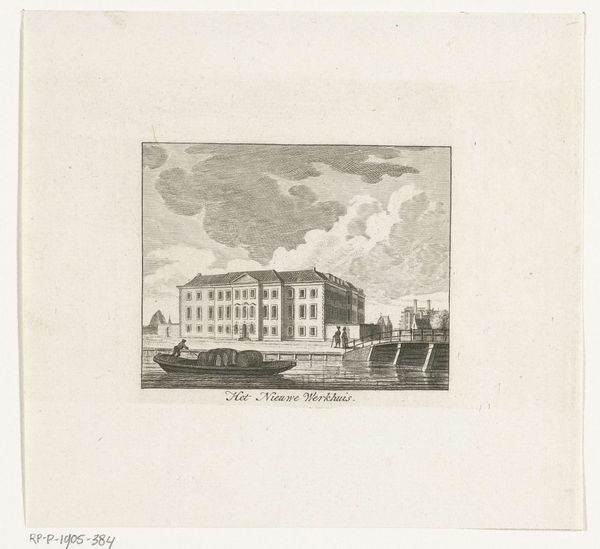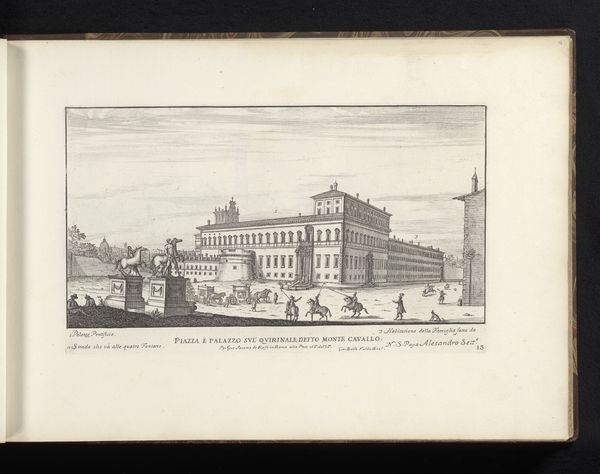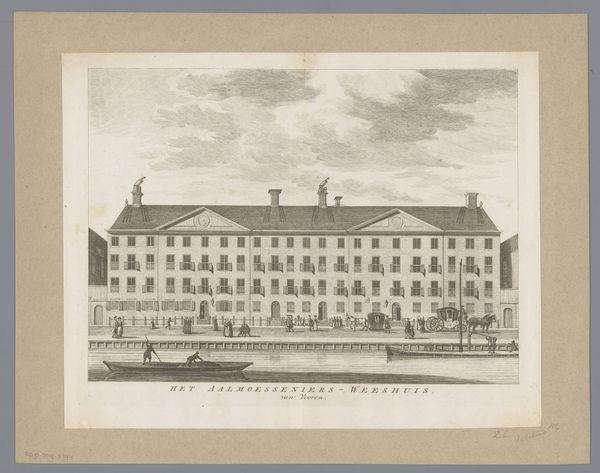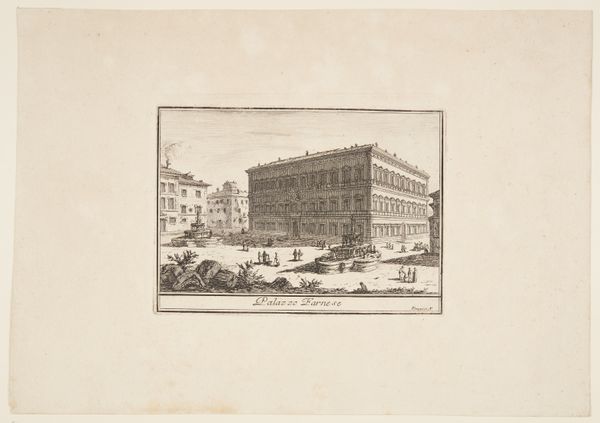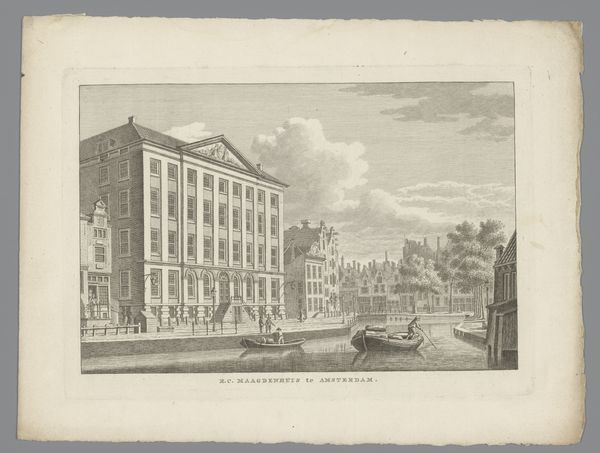
print, engraving
#
dutch-golden-age
# print
#
landscape
#
cityscape
#
engraving
Dimensions: height 129 mm, width 168 mm
Copyright: Rijks Museum: Open Domain
Curator: What strikes me about this engraving from around 1694-1697, Jan van Call's "View of the Binnen-Amstel between the Blauwbrug and the Halvemaansbrug," is its depiction of Amsterdam as a mercantile hub, wouldn’t you agree? Editor: Yes, initially I’m drawn to how serene it feels despite being a cityscape. There's a balance, almost a stasis, between the activity on the water and the imposing buildings along the Amstel. Those puffy clouds feel… symbolic, almost divine, hovering above this busy port. Curator: Precisely! The symmetry is key. The Halvemaansbrug connected areas vital for trade. We see bustling boat traffic, vital for transport and demonstrating Amsterdam’s economic prowess. It served a specific social and political role in promoting Amsterdam’s strength. Editor: The Halvemaansbrug, right – a ‘half-moon bridge’. The semicircle motif resonates – closure, cycles, phases of the moon, maybe? It speaks to a rhythm inherent in urban life, repeated across culture. And those repeating arches on the waterfront buildings! Such precise lines emphasize rational order… Curator: It's no coincidence. The Republic sought to project itself as a society of reason and order, deeply embedded in the artistic culture. Look at the carefully calibrated perspective; this creates an accessible view to reinforce the city’s self-image. Editor: Yet it's an imagined view too, isn't it? Engravings like this offer a stylized view, carefully composing symbolic messages and shaping our very understanding of Amsterdam's Golden Age. I see not just factual representation, but calculated visual narrative meant to sway opinion. Curator: Certainly. The city cultivated its brand! The Dutch Republic was keen on controlling imagery to project the strength of its governance and economic stability abroad. It highlights that images are never passive representations of a world. They act upon that world. Editor: Indeed. And understanding the language embedded helps us discern those underlying, manipulative designs even today. Next time I see those balanced lines of cityscape I may be inclined to distrust it more… Curator: Well, I for one see a conscious desire of the burghers for historical significance – images of an economic zenith in Europe, during the Dutch Golden Age. A picture of how Amsterdam saw itself!
Comments
No comments
Be the first to comment and join the conversation on the ultimate creative platform.
